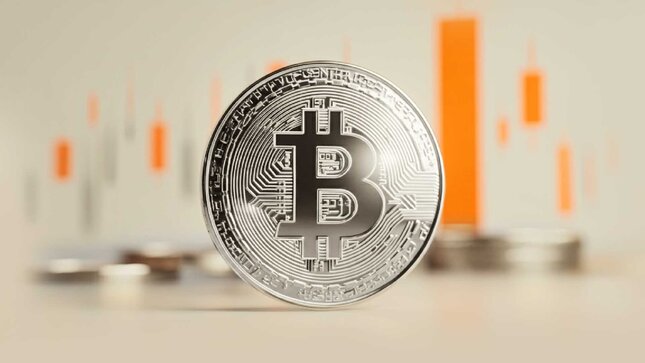FOMC Interest rate decision (Fed) | News & Analysis
US President Trump: Next Fed chair will believe in lower interest rates 'by a lot'
Speaking in a national address early Thursday, US President Donald Trump said the next chairman of the Federal Reserve (Fed) will be someone who believes in lower interest rates "by a lot."
Fed’s Bostic: Growth is solid, expects to see that continuing in 2026
Atlanta Federal Reserve (Fed) President Raphael Bostic said on Wednesday that GDP growth is solid and that he expects to see that continuing in 2026, while participating in a moderated discussion at the Gwinnett County Chamber of Commerce in Georgia.
FED Latest News
FED Latest Analysis
Related Content
Editors' Picks

EUR/USD holds above 1.1750 due to cautious trade before FOMC Minutes
EUR/USD holds ground after four days of little losses, trading around 1.1770 during the Asian hours on Tuesday. The pair remains steady as US Dollar moves little amid market caution ahead of the Federal Open Market Committee December Meeting Minutes due later in the day, which could offer insights into the Federal Reserve’s 2026 outlook.

GBP/USD finds key support near 1.35 despite year-end grind
GBP/USD remains bolstered on the high end as markets grind through the last trading week of the year. Cable caught a bullish tilt to keep price action on the high side of the 1.3500 handle, though year-end holiday volumes are unlikely to see significant progress in either direction as 2025 draws to a close.

Bitcoin Price Annual Forecast: BTC holds long-term bullish structure heading into 2026
Bitcoin (BTC) is wrapping up 2025 as one of its most eventful years, defined by unprecedented institutional participation, major regulatory developments, and extreme price volatility.

Gold rises on Fed rate cut bets, safe-haven flows
Gold price edges higher above $4,350 during the early European trading hours on Tuesday. The precious metal recovers some lost ground after falling 4.5% in the previous session, which was gold's largest single-day loss since October. Increased margin requirements on gold and silver futures by the Chicago Mercantile Exchange Group, one of the world’s largest trading floors for commodities, prompted widespread profit-taking and portfolio rebalancing.

Solana risks correction within descending wedge as bearish bets rise
Solana hovers above $120 at press time on Tuesday after a nearly 2% decline on Monday. The SOL-focused Exchange Traded Funds see renewed interest after recording their lowest weekly inflow last week.
Majors
Cryptocurrencies
Signatures
Big Picture
What's important about the Federal Reserve’s monetary policy meeting?
With a pre-set regularity, a nation's central bank holds a monetary policy meeting where board members take different measures, the most relevant one setting the range of the federal funds rate, which greatly influences the interest rate charge on loans and advances to commercial banks.
In the US, the Federal Open Market Committee (FOMC) of the Federal Reserve (Fed) meets at intervals of five to eight weeks to announce their latest decisions. An interest-rate hike increases borrowing costs throughout the economy. This results in a stronger US Dollar (USD) as it makes the US a more attractive place for international investors. A rate cut, on the other hand, tends to weaken the USD.
If rates remain unchanged, the attention, main news and analysis turn to the tone of the monetary policy statement and the press conference from the Fed’s Chair. Markets analyze whether the tone is hawkish or dovish over future developments of inflation.
What is the Fed?
The Federal Reserve (Fed) is the central bank of the United States (US) and it has two main targets: to maintain the unemployment rate at its lowest possible levels and to keep inflation around 2%. The Federal Reserve System's structure is composed of the presidentially appointed Board of Governors and the partially appointed Federal Open Market Committee (FOMC). The FOMC organizes eight scheduled meetings in a year to review economic and financial conditions. It also determines the appropriate stance of monetary policy and assesses the risks to its long-run goals of price stability and sustainable economic growth. The FOMC Minutes, which are released by the Board of Governors of the Federal Reserve weeks after the latest meeting, are a guide to the future US interest-rate policy.
Fed official website, on X and Facebook
How to trade the event?
- Do not rely on the Fed to determine the direction of the dollar in the coming months.
- The dollar tends to follow its predominant trend when the Fed starts to hike rates.
- There is no direct link between the Fed hiking rates and the usd falling. When a weak usd has coincided with a Fed hiking cycle, it has been falling for some time.
- Due to this, we may see a muted reaction to a potential Fed rate hike.
WHO IS FOMC'S CHAIRMAN?
Jerome Powell
 Jerome Powell took office as chairman of the Board of Governors of the Federal Reserve System in February 2018, for a four-year term ending in February 2022. His term as a member of the Board of Governors will expire January 31, 2028. Born in Washington D.C., he received a bachelor’s degree in politics from Princeton University in 1975 and earned a law degree from Georgetown University in 1979. Powell served as an assistant secretary and as undersecretary of the Treasury under President George H.W. Bush. He also worked as a lawyer and investment banker in New York City. From 1997 through 2005, Powell was a partner at The Carlyle Group.
Jerome Powell took office as chairman of the Board of Governors of the Federal Reserve System in February 2018, for a four-year term ending in February 2022. His term as a member of the Board of Governors will expire January 31, 2028. Born in Washington D.C., he received a bachelor’s degree in politics from Princeton University in 1975 and earned a law degree from Georgetown University in 1979. Powell served as an assistant secretary and as undersecretary of the Treasury under President George H.W. Bush. He also worked as a lawyer and investment banker in New York City. From 1997 through 2005, Powell was a partner at The Carlyle Group.
Jerome Powell Fed's Profile and Wikipedia
The World Interest Rates Table
The World Interest Rates Table reflects the current interest rates of the main countries around the world, set by their respective Central Banks. Rates typically reflect the health of individual economies, as in a perfect scenario, Central Banks tend to rise rates when the economy is growing and therefore instigate inflation.
